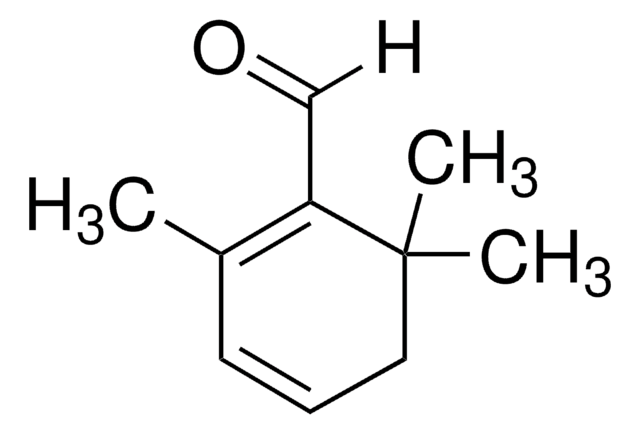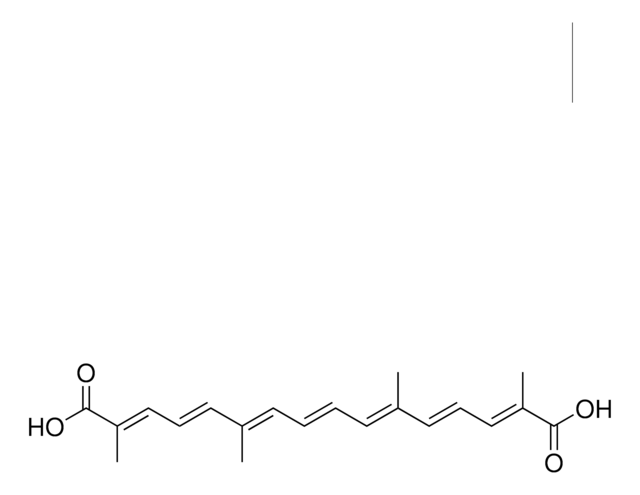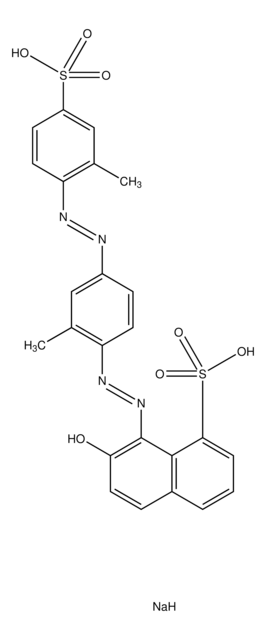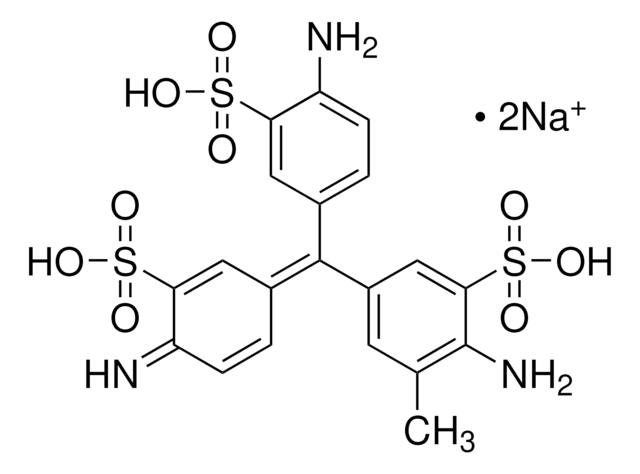S8381
Saffron
Crude extract isolated from Crocus sativus
Sinónimos:
Crocus sativus
Iniciar sesiónpara Ver la Fijación de precios por contrato y de la organización
About This Item
Código UNSPSC:
12171500
NACRES:
NA.47
Productos recomendados
Nombre del producto
Saffron, crude source of crocetin and crocein
Nivel de calidad
técnicas
microbe id | staining: suitable
aplicaciones
diagnostic assay manufacturing
hematology
histology
temp. de almacenamiento
room temp
Descripción general
Dried flower stigmas that may be used in a variety of histological staining procedures.
Aplicación
Saffron has been used to develop an HPLC analytical protocol for the identification and quantification of the major components of saffron. It has also been used to study its cytotoxic effects.
Acciones bioquímicas o fisiológicas
Saffron is a crude source of the carotenoid antioxidants crocein and crocetin, as well as other carotenoids and monoterpene aldehydes. Saffron has been studied for use as an anticancer and chemopreventive agent and for its effects on antioxidant defense system pathways. A study in mice reported treatment with saffron reduced lipid peroxidation and caspase-3 activity, while increasing total brain antioxidant activity.
Código de clase de almacenamiento
11 - Combustible Solids
Clase de riesgo para el agua (WGK)
WGK 3
Punto de inflamabilidad (°F)
Not applicable
Punto de inflamabilidad (°C)
Not applicable
Equipo de protección personal
Eyeshields, Gloves, type N95 (US)
Elija entre una de las versiones más recientes:
¿Ya tiene este producto?
Encuentre la documentación para los productos que ha comprado recientemente en la Biblioteca de documentos.
Los clientes también vieron
S Zahra Bathaie et al.
Critical reviews in food science and nutrition, 50(8), 761-786 (2010-09-11)
Saffron (Crocus sativus L.) has been an important subject of interest for research teams in the past two decades because of its various biological properties. Chemical analysis has shown the presence of more than 150 components in saffron stigmas. Here
HPLC quantification of major active components from 11
different saffron (Crocus sativus L.) sources
different saffron (Crocus sativus L.) sources
Heriberto Caballero-Ortega
Food Chemistry (2007)
Inhibitory Effect of Saffron (Crocus sativus L.) from Diferent
Countries
Countries
L. Riveron-Negrete
Laboratory Experiments in Organic Chemistry, 5th ed. null
Magdalini A Papandreou et al.
Behavioural brain research, 219(2), 197-204 (2011-01-18)
Brain aging is characterized by cognitive decline and memory deficits that could be the result of oxidative stress and impaired cholinergic function. In this study, the effects of a daily, 7-day, intraperitoneal administration of saffron on cognitive functions were examined
Biomedical properties of saffron and its potential use in cancer therapy and chemoprevention trials.
F I Abdullaev et al.
Cancer detection and prevention, 28(6), 426-432 (2004-12-08)
Chemoprevention strategies are very attractive and have earned serious consideration as potential means of controlling the incidence of cancer. An important element of anticancer drug development using plants is the accumulation and analysis of pertinent experimental data and purported ethnomedical
Nuestro equipo de científicos tiene experiencia en todas las áreas de investigación: Ciencias de la vida, Ciencia de los materiales, Síntesis química, Cromatografía, Analítica y muchas otras.
Póngase en contacto con el Servicio técnico










